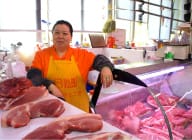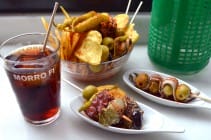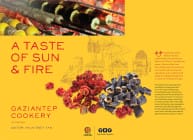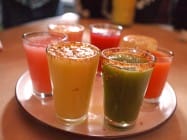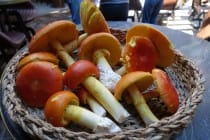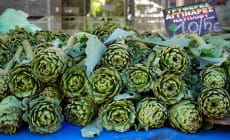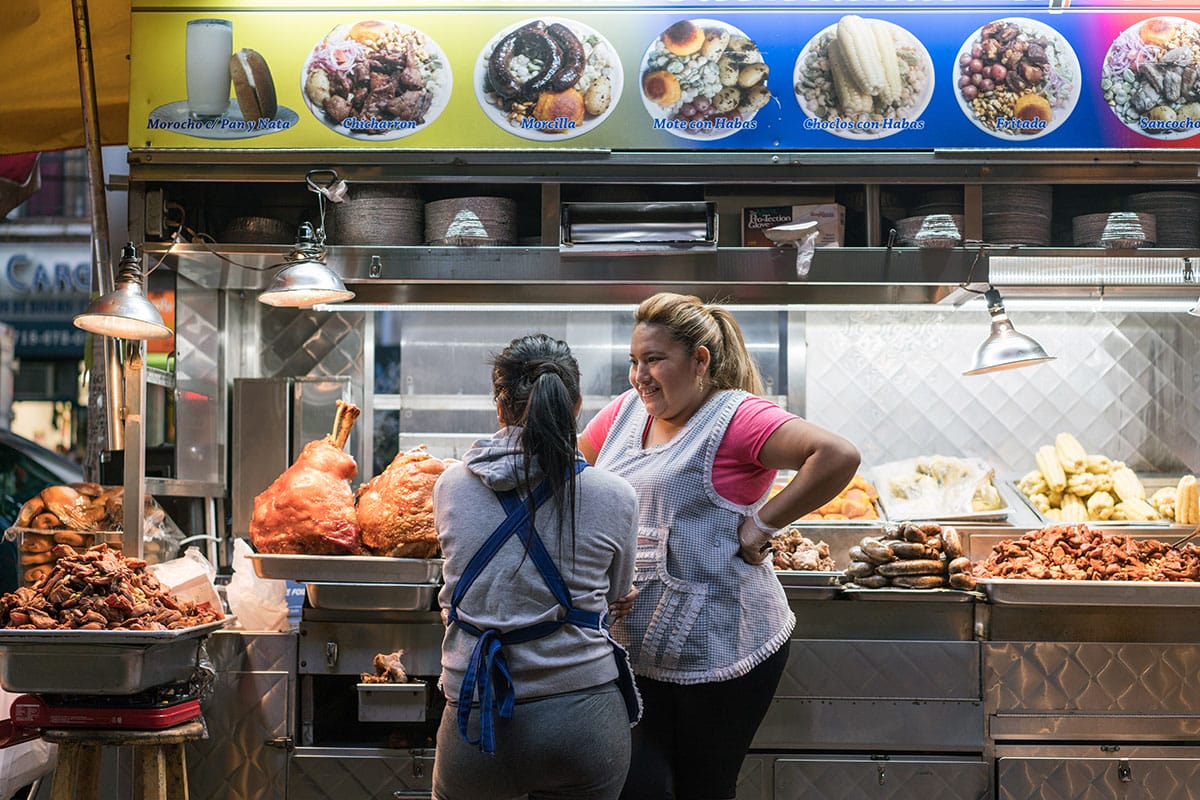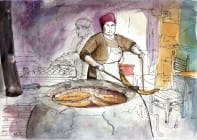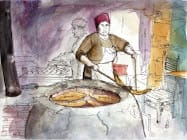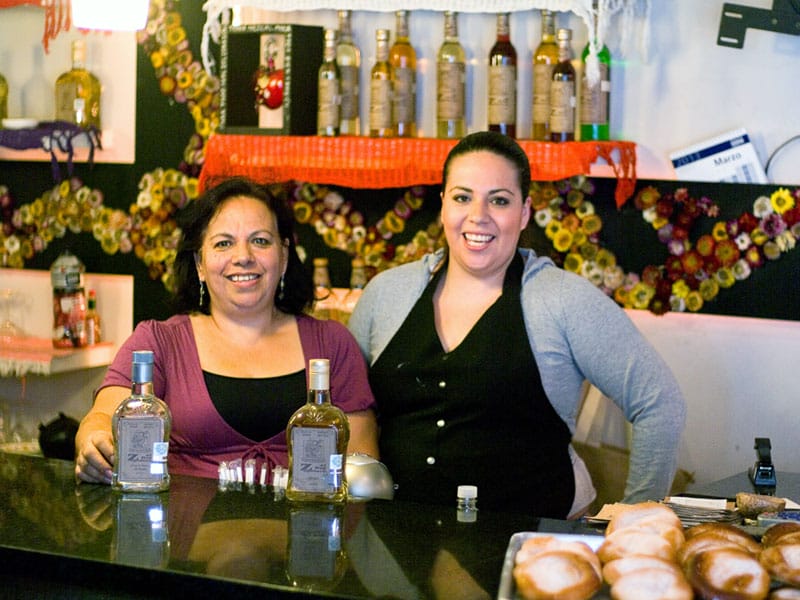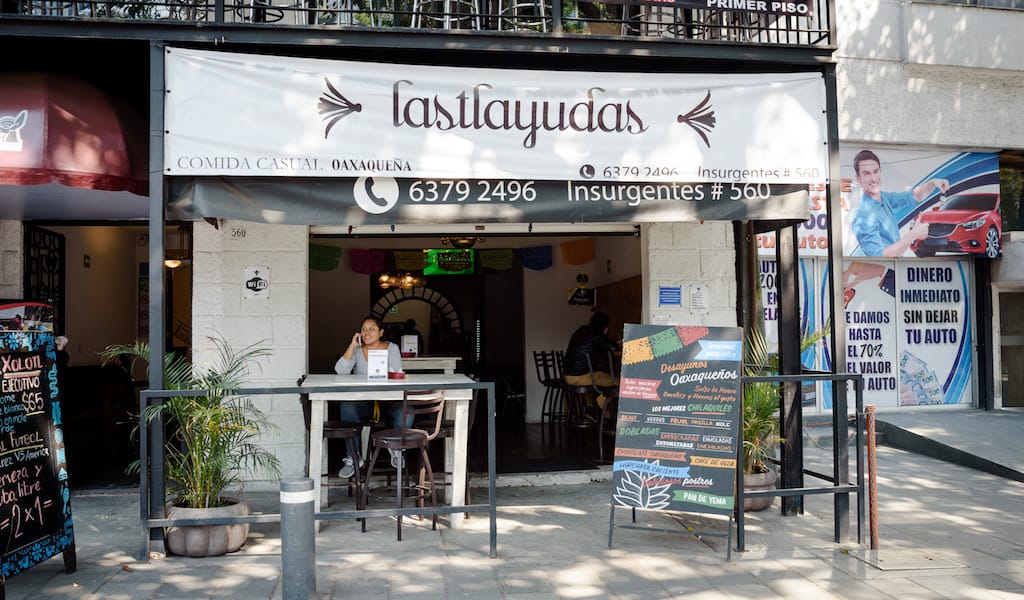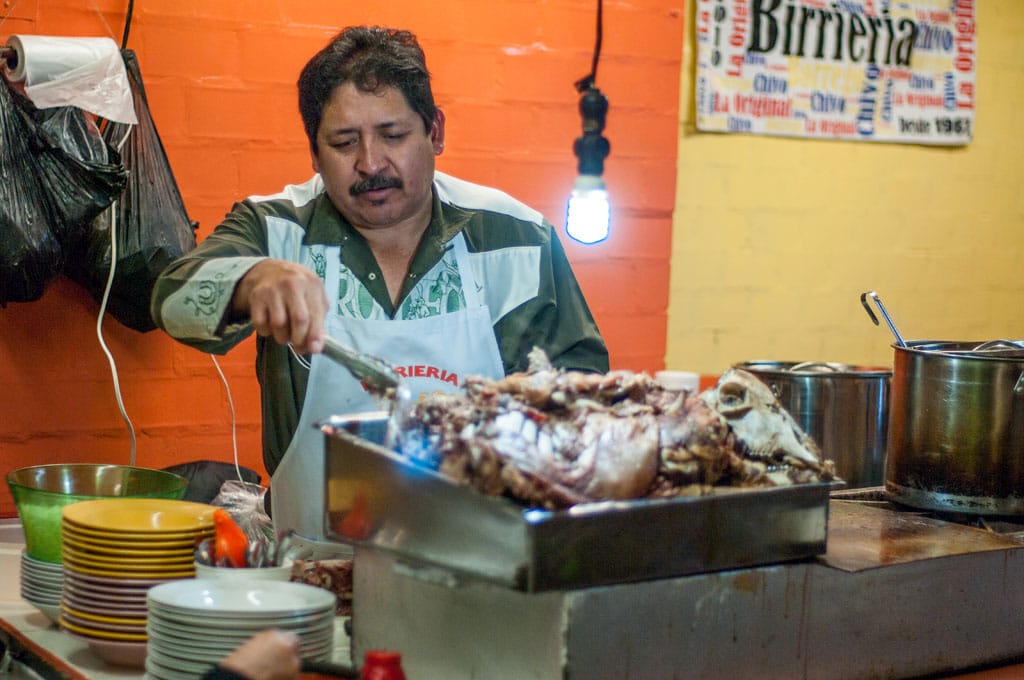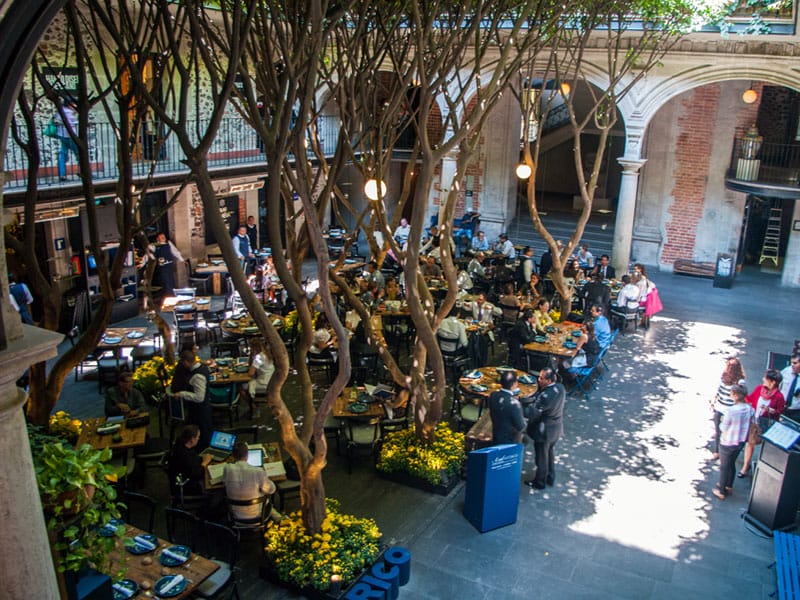Sometimes bureaucracy can be a blessing in disguise. Cruz del Milagro, an informal restaurant in the popular nightlife area of Zona Rosa, was originally intended to be a simple mezcalería, a place where owners Dora Jiménez and daughter Diana Herrera, the third and fourth generation in a line of mezcal producers, could share the family brand, El Rey Zapoteco Mezcal, with the growing base of mezcal aficionados in Mexico City. They were informed, however, that because of a city law, they would either have to also serve food or open a traditional full bar. Fortunately, they chose the first option and decided to focus on the specialties of their home state of Oaxaca, resulting in a menu that’s far from being an afterthought.
The coastal state of Oaxaca, southwest of Mexico City, is well known for its culinary treasures, from its seafood dishes, such as white beans and shrimp in mole, to the wide range of vegetables grown in its central valleys. Above all else, Oaxacan cuisine is about moles, those complex, mostly chili-based multi-ingredient sauces, and the seven most typical versions – red, black, yellow, green, coloradito, manchamanteles and chichilo – take center stage at Cruz, with weekly specials featuring the moles in rotation.
The full range of menu options is available at breakfast and at lunch, or comida (the largest meal of the day for most Mexicans). We love the Oaxacan-style enchiladas, which look more like quesadillas than the stuffed tortilla tubes more commonly found elsewhere in the city. The enchiladas come filled with shredded chicken or beef and topped with your choice of mole, onions, shredded cheese and fresh Mexican cream. Our favorite moles for the enchiladas are mole negro, Oaxaca’s most common mole, which gets its black color in part from the infusion of dark chocolate into the ingredients; and the coloradito, a reddish mole derived from guajillo chilies. We find the black mole, with its mild, spicy-sweet flavor, to pair best with the chicken, while the coloradito, with its far more spicy chili and tomato kick, complements the beef better. The enchiladas are served with fresh juice, followed by a large mug of Oaxacan hot chocolate and a round, sweet roll for dipping, called pan de yema, or “egg yolk bread.”
The early menu offers other unique dishes for adventurous eaters, such as the estofado de lengua de res, slow-cooked beef tongue stuffed with ingredients such as corn, chayote (pear squash) and yerba santa, an aromatic herb. Meanwhile, the mole chichilo, when available, is a dish that will challenge your taste buds and everything you know about moles. Every single ingredient used to make it, including the seeds and skins of the chilies, is either smoked or toasted to the point where it turns black, but not burnt. The richness of this mole can be overwhelming at first, but after a couple of bites one can better appreciate the complexity of this Oaxacan specialty, which Señora Dora gets just right.
During evenings, when Cruz del Milagro is packed with groups sampling the family’s various types of organic mezcals that line shelves behind the bar, a much smaller and more snack-like – but no less delicious – menu is available. The Platón Oaxaqueño, or Oaxacan Platter, offers a mix of Oaxacan cheeses; tostaditos, or small tostadas topped with beans, chicken and shredded cheese; and molotes, small corn-masa fritters. Chapulines, or dried and toasted grasshoppers, are a specialty of Oaxaca, and are served here lightly dusted with chili powder, with a side of homemade guacamole and tortilla chips. The tlayuda, a crunchy, plate-sized tortilla covered with beans, shredded beef or chicken, lettuce, avocado, cheese and Mexican cream, will satisfy those with a bigger appetite.
Dora says she’s less concerned with making a profit than offering customers what she thinks they’ll enjoy eating, and in our experience, she means every word: the dishes taste like a labor of love. Not only that, but she and her daughter are extremely friendly and gregarious, and make it their top priority to ensure that diners feel right at home, almost as if they had been invited to the proprietors’ own dining room and were surrounded by family and friends. There ought to be a law promoting more of that.
 April 12, 2019 Las Tlayudas
April 12, 2019 Las Tlayudas
Alex Montes and his business partner, Askari Mateos, have spent years fussing over their […] Posted in Mexico City January 27, 2016 CB on the Road
January 27, 2016 CB on the Road
Although, thanks to its once flourishing silver and gold mines, the north-central […] Posted in Mexico City June 5, 2013 Azul Histórico
June 5, 2013 Azul Histórico
There wouldn’t be much of a revived culinary scene in Mexico City without chef Ricardo […] Posted in Mexico City
Published on April 04, 2013
Related stories
April 12, 2019
Mexico CityAlex Montes and his business partner, Askari Mateos, have spent years fussing over their recipes for tlayudas: large, thin corn tortillas topped with various ingredients. So what is the secret to a great tlayuda? Montes thinks for a moment. “The asiento [the unrefined pork lard that covers the tortilla],” he finally says, “and the beans,…
January 27, 2016
Mexico CityAlthough, thanks to its once flourishing silver and gold mines, the north-central Mexican state of Zacatecas was an economic powerhouse during the colonial period and the early years of the Mexican republic, its cuisine is not as well known in Mexico City as that of states such as Oaxaca and Michoacán. But when we headed…
June 5, 2013
Mexico City | By Ben Herrera
Mexico CityThere wouldn’t be much of a revived culinary scene in Mexico City without chef Ricardo Muñoz Zurita. A kind of recipe detective and writer of several well-regarded Mexican cookbooks, including the superb Diccionario Enciclopédico de Gastronomía Mexicana, he has been even more successful in his restaurant ventures. After his humble Café Azul y Oro at…
















